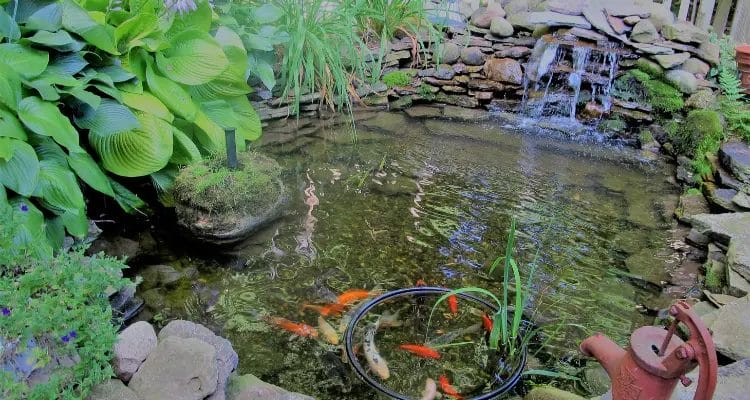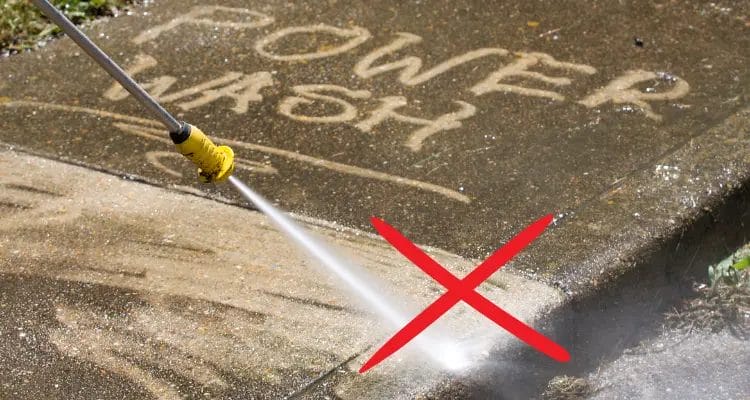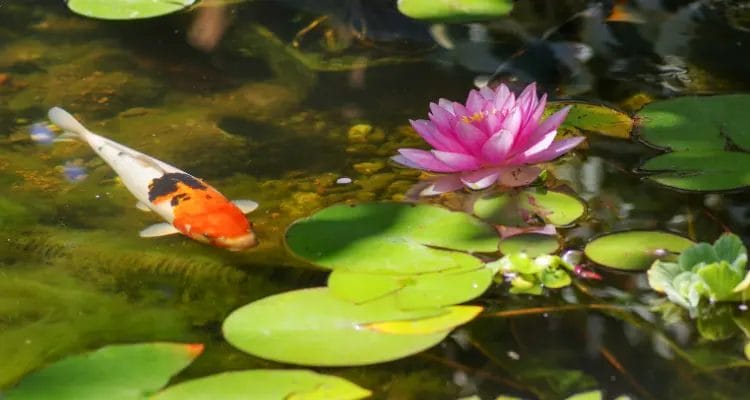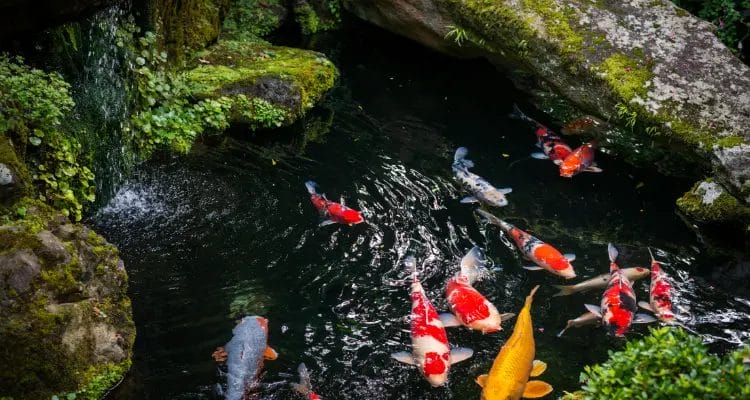How would you like to wake up every morning to crystal-clear water from your pond? If you don’t already have one, now might be the time to consider buying a koi pond or koi fish tank. The benefits include spending time outdoors, relaxing, learning new things, having fun, enjoying nature, and helping wildlife.
However, before you go out and purchase a koi pond or fish tank, it pays to know some basic information and some basic struggle. The first struggle that comes in the way is cleaning it and maintaining a crystal clear koi pond.
For that, you will use many methods, including various equipment. But some analog techniques can help you get clear water without any expense. Such as larger biofilters, flower power, cutting back on fish food, etc. read on to know all the details:

First, let’s find out why the koi pond becomes blurred:
Bacteria
Bacteria is important for the health of your pond and your fish, but sometimes it can lead to cloudy water. If you are experiencing a bacteria spike, it may just dissipate over time. However, if you are patient, your pond will soon be back to normal and all clear.
Beneficial bacteria are necessary for keeping your fish healthy, as they help convert waste chemicals and debris into non-harmful compounds. Without beneficial bacteria, your fish will likely experience a jolting boost in ammonia and other harmful chemical levels, resulting in stress, illness, and even death.
Algae
Algae can take over a small pond quickly. Algae can deplete the oxygen in your pond water, leading to developmental delays, breathing difficulties, and death.
Clear out garden pond algae naturally using barley straw. Soak barley straw in water for 24 hours, then place it in your pond. The barley straw will release enzymes that help break down the algae.
Maintain a clean koi pond, as too much algae, can harm your fish.
Debris
If your pond doesn’t have a skimmer, you’ll need to collect debris manually. If left unchecked, debris such as leftover fish pellets and leaves will cause sludge to form at the bottom of the pond. Excessive amounts of sludge will have your koi gasping for air at the pond’s surface. Removing organic debris as soon as possible is essential to prevent a build-up of sludge.
Fish overfeeding can speed up the rate at which your pond water gets murky. You should only feed your koi twice a day and only give them as much food as they can eat in two minutes. Dirt and foliage may enter your pond from outside if you don’t have a rock barrier or heavy foliage in the area.
These things can cloud your water and make it difficult to see your koi. It may be due to organic debris buildup and overfeeding your fish if you are having trouble seeing through your koi’s water.
Plants
Plants play a vital role in your pond’s ecosystem. They provide oxygen for the water and help keep it clean by absorbing nutrients. Too many plants can throw the oxygen balance out of whack, and algae will take over. decomposing plants can also add to a cloudy water problem.
You should aim for at least 40% and no more than 60% of the surface area to be covered or shaded by plants to create a healthy ecosystem for your pond. Cut back old plants and be sure you’re filtering properly to avoid adding extra algae to your pond.
Having the right kinds of plants and the right amount of them is one of the simplest ways of keeping your pond water clear and clean.

Now you know the reason, so let’s find out how to provide it:
1. Beneficial bacteria
Single-celled algae consume nitrites in green water. Beneficial bacteria also consume nitrites. The secret to clear water is growing enough bacteria to consume all of the nitrites, leaving no nitrites for single-cell algae to grow on. This prevents your water from becoming a green color.
But aren’t bacteria harmful?
This is not the case. An essential part of pond maintenance is beneficial bacteria, which are naturally occurring microorganisms that contribute to the health and beauty of your pond. The best thing about this product is that it’s safe for animals and humans, and you won’t have to worry about adding too much, unlike algaecides, which can kill fish or plants if overdosed.
An autodoser can do the job for you, or you can manually add bacteria. If you choose a liquid or tablet product, the exact amount will differ depending on your pond’s size. On the back of the container are instructions for using the product.
2. filters
doesn’t need to cost a lot of money, it doesn’t need to involve expensive filter systems or tons of chemicals; in fact, the water clarity in most of my ponds is being maintained by simple homemade filters. The water is being kept clean and clear by naturally occurring. Nitrifying bacteria are essential to the pond’s overall health and its inhabitants.

3. Power washing should be avoided
Physically removing string algae from your rocks can help you start controlling algae in your pond. A pressure washer is an entirely different way to remove gunk than pulling it up with a few handfuls.
The ecosystem your pond has built up over time will be destroyed if you wash your rocks. Since this ecosystem cannot be replicated with chemicals, we never wish to scrub, pressure washes, or otherwise disrupt the ecosystem in the pond. Regardless, it will return.
You can rinse your rocks with water from the pond instead of a hose if you need to bathe them. Remove debris and gunk as gently as possible.

4. Make the best out of flower power
Excess Nitrate is produced by bacteria when algae-enabling nitrites are eaten. Those nitrates also feed another kind of algae in your aquarium, the fuzzy kind that clings to the rocks and stringy things found there.
String algae are normal to find in a healthy pond. As long as a wide range of plants is added to the water, you can keep string algae under control. Different types of plants will consume different types of nitrates, making your pond a cleaner place.
Irises consume one type of pollen, and lilies consume a different kind of pollen. The blue flower will eat the other, while the pink flower will eat the other. Depending on what time of year it blooms, a plant that blooms in May will eat a different kind from one that blooms in September.
The plants you place around your pool will work together to prevent algae from growing in the first place so that you will not have to worry about the plants themselves getting infected later on.

5. Pond water is made clear by barley straws
It is only for you if you do not wish to use chemicals to clean your koi pond. Cleaning the pond thoroughly, however, takes a lot of time.
Barley straw is the oldest and most reliable crystal clear koi pond water method. Straws must, however, be used properly. The project’s primary purpose will be compromised if the main purpose is not met.
During decomposing, barley straw releases chemicals into the water that oxygen releases into the environment. Chemicals such as those mentioned above assist in reducing the number of algae that grows in the water.
On top of the water surface, you will now need to float barley straws on it. This helps to speed up the decomposition of barley straws. Nevertheless, it may take months or even weeks for the body to decompose after it has been handled. The key here is to be patient.
It’s impossible to get crystal-clear water with hydrogen peroxide during summer. You can solve this problem by using straws barely. This is the perfect time of year to use barley straws.
At temperatures above 20°C, bare straws decompose rapidly. They release natural chemicals that do not harm koi fish. In addition to being cost-effective, this method is also easy to implement.
A pond must be cleaned with a certain number of barley straws. One bale of barley straw (1 bale = 218 kgs) is sufficient to clean 1000 gallons of water. It is now important to determine the right ratio according to the water-carrying capacity of the pond. It is recommended to use two bales of barley every 8-10 weeks to prevent excessive algal bloom.

6. limit fish numbers
Fish are a crucial part of any pond ecosystem, but there is a limit to how many fish you can keep in a small space. A common mistake is to house too many fish in a very small area. This causes overcrowding and stress for both the fish and the owner. Overcrowding also leads to poor water quality, which can cause problems such as cloudy water, increased ammonia levels, and even death.
The amount of fish you can comfortably keep depends on several factors, including the size and efficiency of the filtration system, the type of fish being kept, and the size of the aquarium. Many people keep up to 20 gallons of fish per square foot.
Remember that larger tanks require frequent feeding and cleaning and take longer to fill with clean water. Filtration is usually already built into smaller tanks, so they do not require additional filtration.
Suppose you’re finding that your water is becoming murky because your fish are producing excess waste. In that case, your filter is probably not doing a great job of filtering out those pollutants. You can increase your filter’s performance by regularly changing filters, adding extra gravel, and increasing the pump’s flow rate.
Watch: The best way to clear your pond water
Frequently Asked Questions:
Aeration – what does it mean?
How does organic debris get disposed of?
Does baking soda work in ponds?
How do I clean my koi pond with hydrogen peroxide?
Does my koi pond need to be vacuumed?
Conclusion
In conclusion, we have discussed koi pond care and maintenance. We hope that these tips help you to maintain your koi pond. Now you can enjoy crystal clear water and have a relaxing time.






